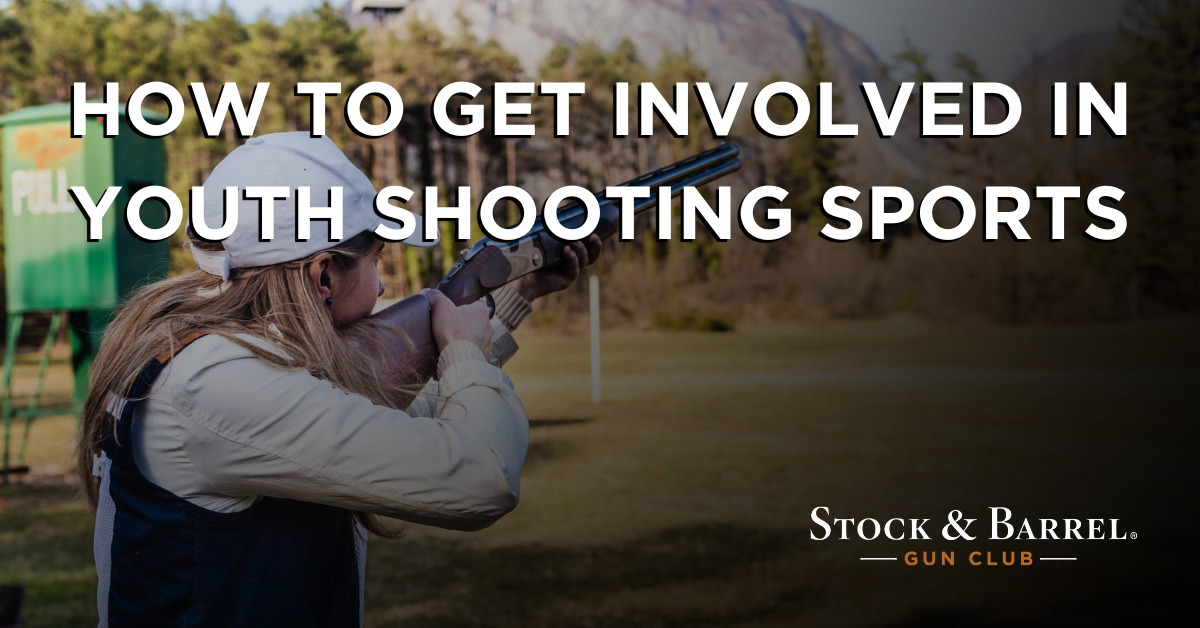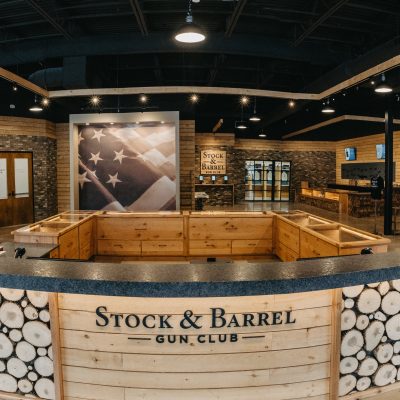Despite what popular culture might tell you, youth shooting sports are alive and well in the United States. Arguably our national pastime, competitive shooting is an excellent way to introduce our nation’s youth to not only safe handling but healthy sportsmanship, self-discipline, and character in the face of adversity. There are a number of great programs out there sponsored by youth organizations from the Boy Scouts of America to Civil Air Patrol to 4-H. But the one national organization that specializes in this particular niche of the firearms world is the Scholastic Shooting Sports Foundation.
The SSSF has two primary youth shooting sports programs – the Scholastic Clay Target Program and the Scholastic Action Shooting Program. These programs are broken down by region, with teams located all over the US, and a well-developed hierarchy of local, state, regional, and national matches. The Clay Target Program offers American skeet, trap, and sporting clays teams, as well as international skeet, double trap, and bunker trap while its counterpart Action Shooting Program offers rimfire rifle and pistol, centerfire pistol, and pistol caliber carbine as well as 10-meter air rifle, 10-meter air pistol, and sport pistol. (The latter three being Olympic disciplines that offer Olympic qualifier matches.)
WHAT ARE THE BENEFITS OF YOUTH SHOOTING SPORTS?
Youth shooting sports, like any sport, help develop essential life skills like patience, perseverance, sportsmanship, and adherence to rules. But shooting sports in particular bring some unique learning points to the table. First and foremost, of course, is firearms safety. Shooting sports are one of very few athletic endeavors that could harm you fatally if you take shortcuts on safety. The organizations that run youth leagues are incredibly sensitive to this and maintain rigorous safeguards including gradual introduction of various shooting related tasks, intense supervision from certified and experienced coaches, and very low athlete-to-coach ratios. These reasons, incidentally, make a shooting team one of the best places for kids to learn safe gun-handling without the pressure or tension of learning from their parents or a stranger.
While students do form squads and teams, you are ultimately competing against yourself for a personal best time that contributes to the team’s score. There’s no blaming a teammate for fumbling a pass, or a judge who gave you a subjective score you didn’t agree with. It’s just your trigger finger and the shot timer. Therefore, in order to contribute to the team’s success, shooting athletes must be intensely self-motivated and self-disciplined. This also allows learning to occur mostly self-paced, without the pressure of direct competition with, or comparison to, one’s teammates. In this way, youth shooting sports can be great for self-esteem. In most youth leagues, no physical movement is required except for transitioning the gun between targets. This both ensures the highest degree of safety for lesser-experienced shooters, opening the playing field (literally) to children with a wide degree of physical capability.
Some of these programs have qualifier pipelines that could lead to national or international competitions, or even to compete at the Junior Olympic level. Youth shooting sports may not have the deep pockets of more mainstream ball-throwing sports, there are scholarships to be had in some leagues for middle- and high-school age athletes looking to develop a skill that may help them through college. In fact, the Scholastic Clay and Action programs have collegiate teams that will recruit promising athletes from junior teams around the country.
For students that may have an interest in pursuing a career in the firearms industry, a youth team may be a great way to begin networking. Some teams have the opportunity to interact directly with their sponsors, or with companies in the firearms industry who may be local. A chance to interact with a regional sales representative, product engineer, or Chief officer of a firearms company could be the start of a relationship that turns into a job opportunity in a few short years.
WHAT DO I NEED?
One of the best things about youth shooting sports is that you need very little to get started. In some cases, you may not even need a gun! Many clubs and teams keep a small inventory of loaner or “team” guns for athletes to use in practice and competition until if/when they are able to procure their own. Ammo can also sometimes be purchased directly from the team on site during practice. Since most youth shooting sports are centered around rimfire guns, ammo is relatively inexpensive, and only needed in small quantities. Sometimes as little as 100 rounds for a single practice session or match.
Contact a team directly before showing up to a practice session if at all possible, but count on at least needing some basic range safety gear – eye and ear protection, and close-toed shoes. There may be some club dues or range use fees required to attend a practice. Also be prepared to sign a waiver. Beyond that, a positive attitude and open mind are usually all that’s required to get started in shooting sports.
Start by looking up your local youth organizations. If they don’t offer a shooting program, they may know another organization which does. You might also check with your local firearms dealer or shooting range to see if they host or sponsor a team. For larger outfits, like the Scholastic Shooting Sports Foundation, go direct to their national website and find a team in your area. So now that we’ve got you interested, come give competitive shooting a try. Stop into Stock & Barrel in Chanhassen and give our Scoot-n-Shoot league a try. This takes place every other Thursday with no set time and full details can be found on our website.
Whether your child is looking for character development, team bonding, resume development, or just to get involved in shooting culture, youth shooting sports is a fantastic outlet to keep our next generation involved in the root of American sportsman culture.
OTHER BLOGS YOU WILL FIND OF INTEREST:
CLASSES YOU MAY BE INTERESTED IN:
- Basic Shotgun Orientation in Chanhassen or Eagan
- Introduction to Handgun Safety in Chanhassen or Eagan
- Travel Safety & Security in Chanhassen or Eagan





